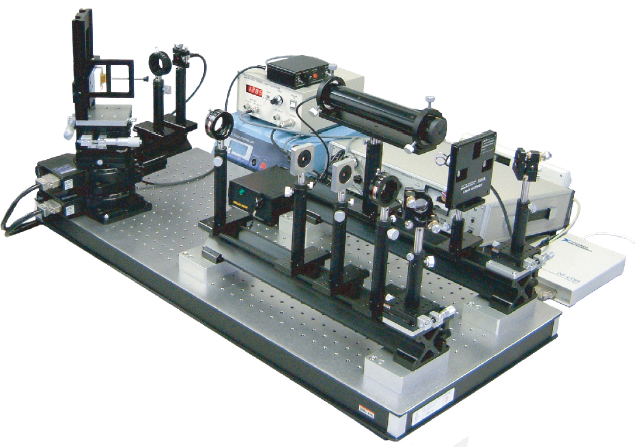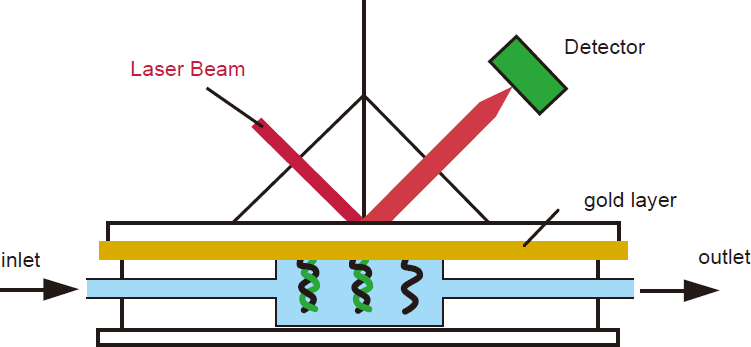SPR
Surface Plasmon Resonance

Product Information
The Surface Plasmon Resonance (SPR) Spectrometer, developed in collaboration with Prof.
Wolfgang Knoll with Max Planck Institute for Polymer Research (MPI-P) in Germany, allows
users to perform a highly sensitive non-label analysis for the interaction of organic molecules
(biological molecules etc.) on a surface in real time by utilizing the surface plasmon resonance
phenomena. We would sincerely appreciate your consideration of our SPR system for your
research uses in the cutting-edge nanotechnology field.
Principle Use
Direct measurement of interaction between DNA/RNA, protein(antigen-antibody), sugar and
cells Analysis of adsorption rate and determination of bonding amount and coupling constant.
Features
- Label free (no need to use fluorescent dye labeling)
- Real-time kinetic analysis of adsorption and desorption phenomena
- Flexible system configuration allowing users to customize attachments(electrochemical cell, CCD camera, temperature control, etc.) to meet the research usage.
- Measurement software using LabViewTM
Surface Plasmon Resonance: Optical Principle
When the incoming light is reflected on the interface of about 50nm thick metal layer through a prism,
at a certain angle of incidence in total internal reflection, the characteristic light absorption (attenuation
of reflected light) can be observed. This is the Surface Plasmon Resonance (SPR) phenomena. It is very
sensitive to the change of reflective index of the media, i.e. molecular adsorption to the metal interface in
the evanescent light distance, and monitoring the change allows high-sensitivity measurement of
molecular-adsorption movement on surface.
The irradiated light on the backside is totally reflected and generates the weak energy wave
(evanescent wave) on the metal layer side, then the interaction between the materials induced on
the sensor-chip surface differ the dielectric constant and influence the surface plasmon. Thus, we can
recognize the interaction between the materials as a change of resonance.

Measurement Modes
Angle Scan Mode
The system sweeps the angle of incidence and monitors
the reflected intensity with θ-2θgoniometer.
Angle scan mode allows users to determinate the
adsorption quantity of molecules.
Kinetics Mode
The system fixes the angle of incidence and measures
the reflected light intensity as a function of time.
Kinetics mode allows users to monitor the
adsorption/desorption process of molecules in real time

Configuration
- Basic SPR optical system size (100 x 450 x 50H)
- θ-2θ goniometer (stepping motor drive)
- He-Ne laser
- Actinometer
- Chopper and Lock-in amplifier
- Attenuator
- Sample holder (holder and LaSFN9 prism)
- PC and Software
Option
*For more information, please contact us.
- Liquid-flow system
- Temperature control system
- SPR microscope
- Fluorescence microscopy
- Fluorescence spectroscopy
- Grating-coupling SPR
etc.
Specifications
- Resolution: Angle resolution 0.0025 , Time resolution 0.1 sec.
-
Reflectance sensitivity: 0.1%
- Angle scan mode
Measurement range:incidence angle of 10°to 90°
Optical sensitivity of film-thickness : 1Å - Kinetics mode
Reflectance sensitivity 0.1%
Time resolution 0.1 sec
- Angle scan mode
- Measurement mode
-
Extensibility
- Open unit allows users to customize attachments to meet the research usage

